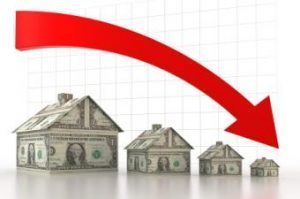 While home prices are still 1.6 percent above 2016 levels, total existing-home sales dipped 2.3 percent to a seasonally adjusted annual rate of 5.57 million in April from a downwardly revised 5.7 million in March according to the National Association of Realtors (NAR).
While home prices are still 1.6 percent above 2016 levels, total existing-home sales dipped 2.3 percent to a seasonally adjusted annual rate of 5.57 million in April from a downwardly revised 5.7 million in March according to the National Association of Realtors (NAR).
NAR Chief Economist Lawrence Yun said every major region, with the exception of the Midwest, saw a retreat in existing sales in April. Due to the strong sales increase in March at 4.2 percent and inventory falling behind the fast paced home market, last months dip in closings were somewhat expected.
The median existing-home price for all for all housing types in April was $244,800, up 6 percent from April 2016 ($230,900).
Frustration over the insufficient number of homes for sale is a prominent topic among Realtors.
“On the supply side, new homes are predominantly being built for the mid- to upper-price range, but on the demand side, buyers are increasingly seeking low- to moderately-priced homes,” NAR Senior Economist Joseph Kirchner, Ph.D. said. “This mismatch makes landing an affordable home that much tougher, and is keeping many would-be buyers out of the market.”
Properties generally stayed on the market for 29 days in April, down from 34 days in March and 39 days a year ago. Short sales were on the market the longest at a 88 days in April. Foreclosures sold in 46 days. 52 percent of homes sold in April were on the market for less than a month, which is a new high according to NAR.
NAR President William E. Brown, a Realtor from Alamo, California, said it is not only prospective homebuyers who are facing housing issues; many middle-income homeowners are experiencing the same problems. A recently released study commissioned by NAR titled, Impact of Tax Reform Options on Owner-Occupied Housing, estimated taxes would rise on average by $815 each year for homeowners with adjusted gross incomes between $50,000 and $200,000. This means that the value of homes could dwindle by an average of more than 10 percent. Areas with higher property taxes or state income taxes will experience an even steeper decline.
“Tightening supply caused existing home sales to fall in April, especially for low- to moderately-priced homes,” Kirchner said. “We saw supply fall from 4.4 months of supply a year ago, to just four months in April. That means there are fewer homes in the market and they are selling faster. That’s good news for sellers, but it means frustration for buyers seeking affordable homes, including millennials.”

 theMReport.com Your trusted source for mortgage banking news
theMReport.com Your trusted source for mortgage banking news








